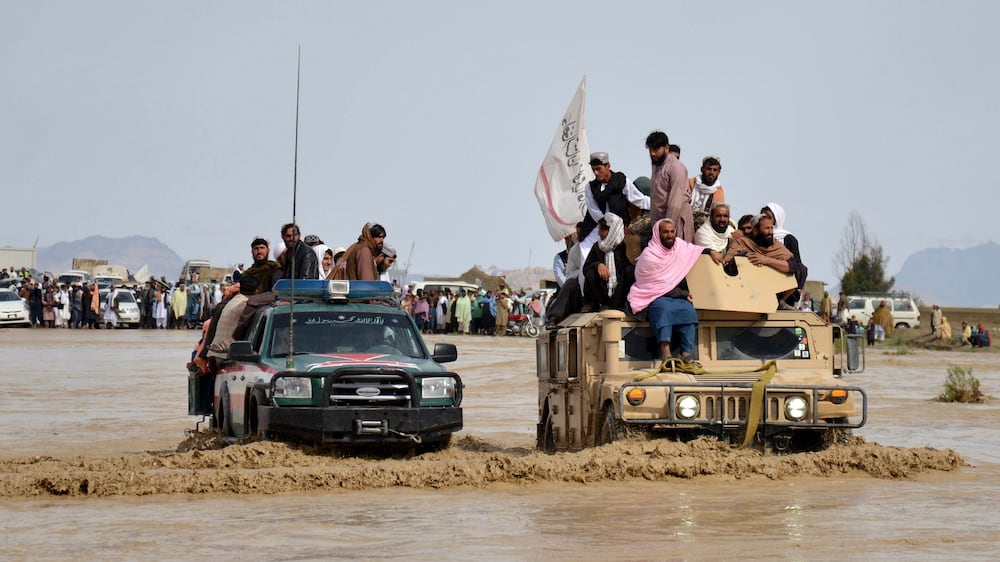Flash floods have killed at least 120 people in Afghanistan and Pakistan, and damaged houses, infrastructure and farmland since Friday, according to authorities.
While losses in both countries are devastating, the disaster will hit Afghanistan particularly hard, a country largely cut off from international assistance since the Taliban regained control of the country in 2021, after two decades of war with a US-led coalition and western-backed government.
“Our estimates show that around 70 people lost their lives and around 56 were injured as a result of heavy rains and floods across 23 provinces of Afghanistan,” Janan Sayeq, spokesperson of the Taliban-run Disaster Management Authority, told The National.
Other estimates put the death toll at around 88.
“In addition, 2,627 houses, 3 mosques and 4 schools have been partially or completely damaged.”
Devastated by the continuing humanitarian crisis and enduring drought in the country, most families affected by the floods are in urgent need of humanitarian assistance.
“Together with aid organisations, we are trying to provide help for those affected by the recent floods considering their urgent needs such as food, shelter and rehabilitation of their agricultural land,” Mr Sayeq said.
Despite prolonged drought in Afghanistan causing harvest failure, sudden deluges can also destroy existing crops.
“It’s peak vegetable season in this region and wheat will be ready for collection soon. The continuing rain will destroy most of it, causing great loss for the farmers,” Sardar Agha, a farmer from Laghman province in eastern Afghanistan, the country’s main agricultural region, told The National.
“The crops in our field are all that we have and if we lose them, we will have nothing to feed our families with for most of the year.”
According to estimates by the country’s disaster management authority, more than 19,000 hectares of agricultural land have been destroyed so far and more than 2,000 livestock have died since the weekend.
This will affect food security across the country, as more than half of the population is already in need of humanitarian assistance, according to UN estimates.
In a statement on Thursday, Afghanistan’s aviation ministry warned of the possibility of more heavy rains and floods in 29 out of 34 provinces of the country in the coming two days.
Due to mountainous geography, thin vegetation cover in many areas and insufficient infrastructure, Afghanistan is especially vulnerable to deluges. Many communities in remote areas are particularly at risk, lacking proper road access and threatened by landslides.
The preparedness and response capacity is also very low in the country, after most international funding stopped after the Taliban regained power.
“We had many problems in our life. With the recent floods, we lost our houses and our livestock,” 54-year-old Haji Gul from Uruzgan province told The National.
“We won’t be able to build our house without support from the government. If we can’t get help soon, our children may die. We need food, water, and a place to live in.”
Experts suggest that the steps taken so far to prevent floods have been limited and are not enough to control the devastating situation, particularly in the face of increasing climate change impacts, that include an increase in the frequency and intensity of rainfall.
“Afghanistan doesn’t have the required infrastructure to store rainwater and prevent floods,” Noorudin Jalali, a Kabul-based environmentalist, told The National. “Most people in rural areas reside in at-risk places close to rivers and streams and they don’t have the means to receive timely information about floods and associated risks. Thus, the damages are inevitable.”





